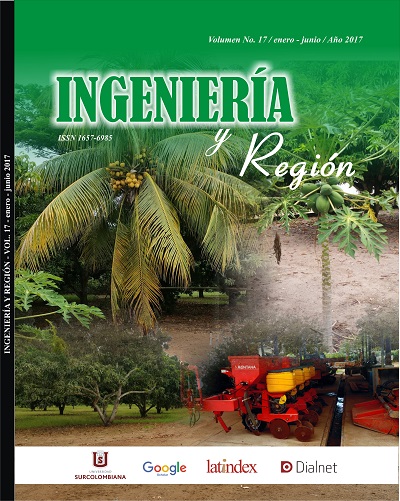La visión de la nanotecnología para las radiocomunicaciones en los próximos años. Una perspectiva desde la academia
##plugins.themes.bootstrap3.article.main##
En los últimos años, la nanotecnología ha marcado un hito en la evolución de las comunicaciones, lo que ha permitido el desarrollo de nuevas aplicaciones y la estandarización de nuevos materiales en una escala nanométrica llamada nanomateriales. Algunos de ellos son el grafeno y sus derivados como los nanotubos de carbono y algunos compuestos como los metamateriales cuyas propiedades y características de tipo electrónico y físico son totalmente compatibles, permitiendo una fusión fácil con las telecomunicaciones. Y es precisamente lo que se pretende mediante este artículo; proporcionar una perspectiva desde la academia para identificar algunos tipos de nanomateriales que nos planteamos algunas preguntas como ¿qué tipo de materiales son?, ¿qué propiedades tienen?, ¿qué clasificación poseen?, ¿cuáles son algunas de las aplicaciones más importantes en el campo de las telecomunicaciones?, y ¿qué desarrollos y aplicaciones hay actualmente? Así, entramos explorando las nanocomunicaciones.
Descargas
##plugins.themes.bootstrap3.article.details##
E. Abad et al., NanoDictionary. Basel: Collegium Basilea (2005) ISBN 10: 3952318108
Foresight Institute – Advancing beneficial nanotechnology. http://www.foresight.org/ - http://www.foresight.org/nano/index.html. March 12, 2014.
J. Ramsden, Essentials of Nanotechnology. Ramsden J & Ventus Publishing Aps (2009) ISBN 978-87-7681-418-2. Parte 1.1 página 10.
National Nanotechnology Initiative – Nano.gov. http://www.nano.gov/ -March 2014.
Y. Gou, J. Hua, Q. Wu, H. Wang. “Broadband Microstrip Antennas Using Complementary Metamaterials Structure”. 2011 Cross Strait Quad-
Regional Radio Science and Wireless Technology Conference.
C. Mijangos, J. Serafín Moya. Nuevos materiales en la sociedad del siglo XXI. CSIC (Consejo Superior de Investigaciones Científicas). Madrid,
ISBN 978-84-00-08453-0. Cap.5 Nanomateriales-“Clasificación de los Nanomateriales”. Albert Figueras y Jordi Pascual.
https://www.grafeno.com/que-es-el-grafeno. GRAFENO® El Material del Futuro. Página oficial de documentación y divulgación.
J. S. Moon, M. Antcliffe, H. C. Seo, S. C. Lin, A. Schmitz, I. Milosavljevic, K. McCalla, D. Wong, D. K. Gaskill, P. M. Campbell, K.-M. Lee, and P. Asbeck3. Graphene Transistors for RF Applications: Opportunities and Challenges. ISDRS 2011, December 7-9, 2011, College Park, MD, USA.
S. Demoustier, E. Minoux, M. Le Baillif, M. Charles, A. Ziaei. New concepts for nanophotonics and nano-electronics. Review of two microwave applications of carbon nanotubes: nano-antennas and nanoswitches. C. R. Physique 9 (2008) 53–66. 2008 Académie des sciences. Published by Elsevier Masson SAS. All rights reserved. https://doi.org/10.1016/j.crhy.2008.01.001
J. Bernholc, D. Brenner, M. Buongiorno Nardelli, V. Meunier, C. Roland, Mechanical and electrical properties of nanotubes, Annu. Rev. Mater. Res. 32 (2002) 347-375.
Tie Jun CUI, IEEE Senior, Chang-Jiang Chair Professor, Southeast University, Nanjing, China. 978-1-4673-2999-6112©20 12 IEEE.
P.J. Burke, S. Li, Z. Yu, “Quantitative theory of nanowire and nanotube antenna performance”, IEEE T. Nanotechnology 5(4) (July 2006).
P.J. Burke, Z. Yu, C. Rutherglen, Carbon nanotubes for RF and microwaves, in: 13th GAAS® Symposium – Paris, 2005.
D. Kilinc, O. B. Akan, "Nanoscale Heat Communication," submitted for publication, 2013.
Dressler F. Biologically-inspired and Nano-scale Communication and Networking. Institute of Computer Science University of Innsbruck,
Austria. dressler@ieee.org. COLCOM 2013.
K. Jensen, J. Weldon, H. Garcia, and A. Zettl. Nanotube Radio. NANO LETTERS 2007. Vol. 7, No.11 3508-3511. Department of Physics, Center of Integrated Nanomechanical Systems, University of California at Berkeley, Berkeley, California 94720, and Materials Sciences DiVision, Lawrence Berkeley National Laboratory, Berkeley, California 94720. https://doi.org/10.1021/nl0721113 American Chemical Society.
Proffesor Ozgur Baris Akan of Department of Electrical and Electronics Engineering from Koc University. Istnabul, Turkey 34450.
akan@ku.edu.tr
B. Atakan, O. B. Akan, “Carbon Nanotube-based Nanoscale Ad Hoc Networks”, IEEE Communications Magazine, vol. 48, pp. 129-135, June 2010.https://doi.org/10.1109/MCOM.2010.5473874
C. Chen, S. Lee, V. V. Deshpande, G. Lee, M. Lekas, K. Shepard, J. Hone, “Graphene mechanical oscillators with tunable frequency”, Nature Nanotechnology, 17 November 2013. https://doi.org/10.1038/nnano.2013.232
Nguyen, C-C. MEMS technology for timing and frequency control, IEEE Trans. Ultrason. Ferroelectr. Freq. Control 54, 251-270 (2007).https://doi.org/10.1109/TUFFC.2007.240
Hajimiri, A. & Thomas, L. The Design of Low Noise Oscillators (Springer, 1999).
D. Malak, M. Kocaoglu, O. B. Akan, "AIGN Communication Channel with Molecular Diversity," submitted for publication, 2013.
G.W. Hanson, Fundamental transmitting properties of carbon nanotube antennas, IEEE T. Antennas Propagation 53 (11) (November 2005).
C. Chen, S. Lee, V. V. Deshpande, G. Lee, M. Lekas, Kenneth Shepard and James Hone. Graphene mechanical oscillators with tunable frequency.
Nature Nanotechnology. Letters: published online 17 november 2013| https://doi.org/10.1038/nnano.2013.232
Ultra-Miniature UHF Antenna using Magneto-dielectric Material. JF. Pintos, A. Louzir, P. Minard, J. Perraudeau, JL. Mattei, D. Souriou, P. Queffelec. 2010 14th International Symposium on Antenna Technology and Applied Electromagnetics [ANTEM] and the American Electromagnetics Conference [ANTEM].


















